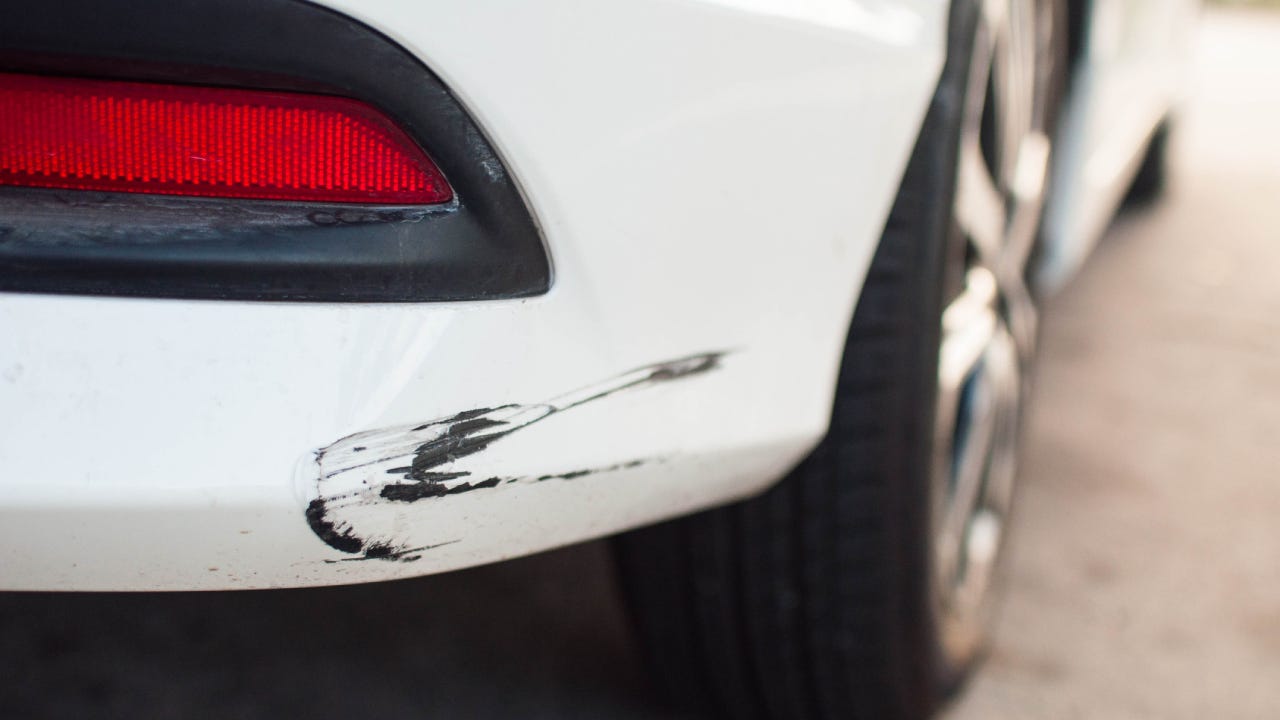What to do after a hit-and-run in Minnesota

The Bankrate promise
At Bankrate, we strive to help you make smarter financial decisions. To help readers understand how insurance affects their finances, we have licensed insurance professionals on staff who have spent a combined 47 years in the auto, home and life insurance industries. While we adhere to strict , this post may contain references to products from our partners. Here's an explanation of . Our content is backed by Coverage.com, LLC, a licensed entity (NPN: 19966249). For more information, please see our .
Getting into a hit-and-run can be frightening and costly. While it’s illegal to leave the scene of an accident in Minnesota, it does still happen. Bankrate’s insurance editorial team researched Minnesota’s hit-and-run law to help you formulate a plan of action in case you ever find yourself the victim of a hit-and-run.
Hit-and-runs in Minnesota
A hit-and-run occurs when the at-fault driver flees the scene of an accident before proper legal procedures have been conducted. In 2022, Minnesota recorded 8,025 hit-and-run accidents, roughly 11 percent of the total number of crashes in the state in that year. Nationwide, hit-and-run accidents are surprisingly common. The AAA Foundation found that in 2015, there was one hit-and-run every 43 seconds in the United States.
Hit-and-run accidents may be more common in states with a high number of uninsured drivers. Drivers without insurance may be more likely to flee the scene of an accident to avoid facing the legal and financial repercussions of driving uninsured. Fortunately, Minnesota has one of the lowest numbers of uninsured drivers in the country. Fewer than 10 percent of drivers in Minnesota are estimated to be uninsured.
Minnesota hit-and-run laws
Minnesota hit-and-run laws state that it is illegal to flee after a collision. If a driver or any of their passengers are injured, the at-fault driver is also responsible for rendering reasonable aid and contacting emergency services. The same laws apply to a driver who hits an unattended vehicle.
The Minnesota hit-and-run statute also states that an at-fault driver must provide their personal information and vehicle registration information to the other drivers involved. The at-fault driver is given 72 hours to provide their insurance information if they do not provide it at the scene.
The legal and financial penalties for hit-and-run accidents vary by circumstance. If the accident only involves property damage, the offender is typically charged with a misdemeanor, fines up to $1,000 and up to 90 days in jail. If it results in death or severe injuries, they may be charged with a felony, could face a fine between $3,000 and $5,000 and may spend up to three years in jail. There is also the potential for license suspension depending on the circumstances.
How hit-and-runs impact car insurance rates in Minnesota
If you were the victim of a hit-and-run, filing a claim shouldn’t increase your car insurance rates as much as an at-fault incident. However, you could still see an increase in premium. If, for example, you had a claim-free discount, even a not-at-fault claim could remove those savings.
If you were at fault for a hit-and-run and are later identified as the offender, the accident could dramatically impact your car insurance premium in Minnesota. Drivers who have their license suspended following a hit-and-run are not required to purchase SR-22 insurance in Minnesota, but it is possible that their insurance company could decline to renew their policy or raise rates substantially to account for the level of risk they pose.
4 things to do after a hit-and-run in Minnesota
Getting into a hit-and-run can be stressful, but staying calm and following proper procedures may help you avoid legal issues and insurance claim hurdles. Here are the steps you may want to follow after a hit-and-run:
- Call for medical care if necessary: The first step you should take after any accident is to assess the safety of yourself, your passengers and anyone else involved in the accident. If you feel that anyone needs medical attention, call emergency services right away.
- Call the police: If you’ve called for medical aid, police may already be on their way. Otherwise, you can call to report the crash. An officer will arrive on scene, assess the situation and write a report. They will also ask you to recount any information you remember, like the color or make of the vehicle that hit you.
- Take photos of the damage: Before you leave the scene, take detailed photos of the damage to your vehicle, if it’s safe to do so. If your car is getting towed, make sure to get the information about where your car will be taken. If you or any of your passengers were treated by paramedics or hospital staff, hold onto those medical records, and keep a record of future medical costs associated with the hit-and-run.
- Call your insurance company: Calling your insurance company is the final thing you should do after a hit-and-run, if you want to file a claim on your own policy. An agent can help you understand what your policy may cover and how to file a claim. You may be asked to provide the photos you took and the police report to help expedite the claim process.
Will insurance cover a hit-and-run?
If the at-fault driver is found and has insurance, their liability coverage should take care of your vehicle damages and injury costs, up to their policy limit.
In Minnesota, your own car insurance policy may cover the damages resulting from a hit-and-run. Every driver is required to carry both uninsured and underinsured motorist coverage, which could pay for your medical expenses if the other driver doesn’t have insurance or doesn’t have enough insurance to pay for your injuries. If the other party flees the scene, though, there’s no way to tell if they were insured or not. Fortunately, Minnesota drivers are also required to carry personal injury protection (PIP), which is designed to cover your medical costs, at least initially, and other qualifying expenses if you get injured in a crash, regardless of who caused it.
If you have a full coverage policy, your collision coverage could help pay for the damage to your vehicle. However, keep in mind that there is often a deductible on collision coverage.
Frequently asked questions
-
-
In Minnesota, the average cost of car insurance is $1,760 per year for a full coverage policy and $585 per year for a minimum coverage policy. However, car insurance rates are personalized based on unique factors like the type of car you drive, age, driving record, and the coverage types and levels you choose.
-
The best car insurance company is different for every driver. For example, a driver looking for the cheapest rates might choose a different carrier than a driver looking for the best customer service. To find the best provider for you, you may want to shop around and compare companies based on your personal criteria.
-
Unfortunately, it is possible that the driver will never be found. Having proper insurance coverage may help relieve some of the financial stress when you are the victim of a hit-and-run. In Minnesota, personal injury protection (PIP) is legally required and can help pay for medical expenses for you and your passengers. Collision insurance is an optional coverage type included in most full coverage policies and could provide physical damage coverage for your own vehicle if the hit-and-run driver is never found.
-
The hit-and-run penalty in Minnesota will vary based on the damage you cause to property and the injuries you inflict on others. If only property is involved, penalties can include a misdemeanor against your criminal record, up to $1,000 in fines and up to 90 days in jail. However, if severe injuries or death are caused, penalties can escalate to a felony, $3,000 to $5,000 in fines and up to three years of jail time.
-
Related Articles



